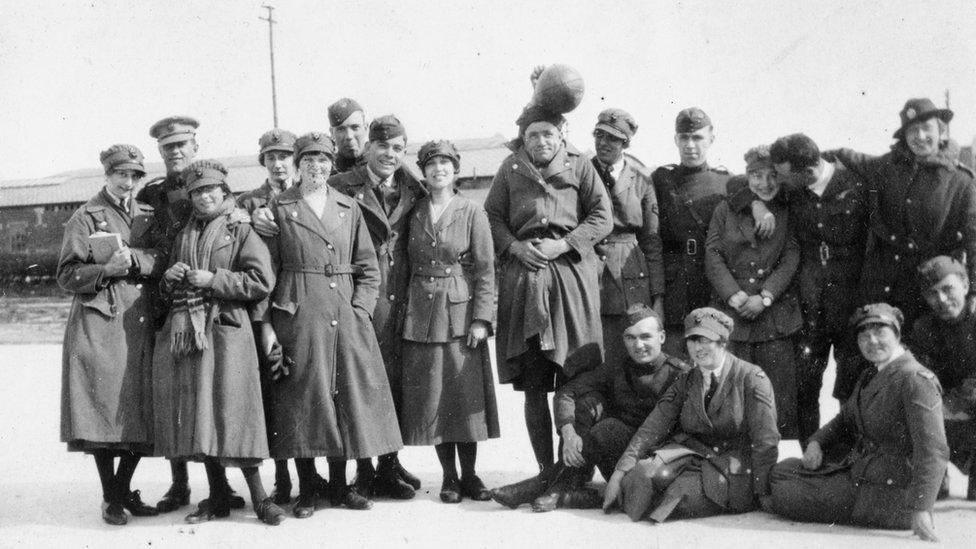Soham bells toll to mark World War Two rail disaster
- Published
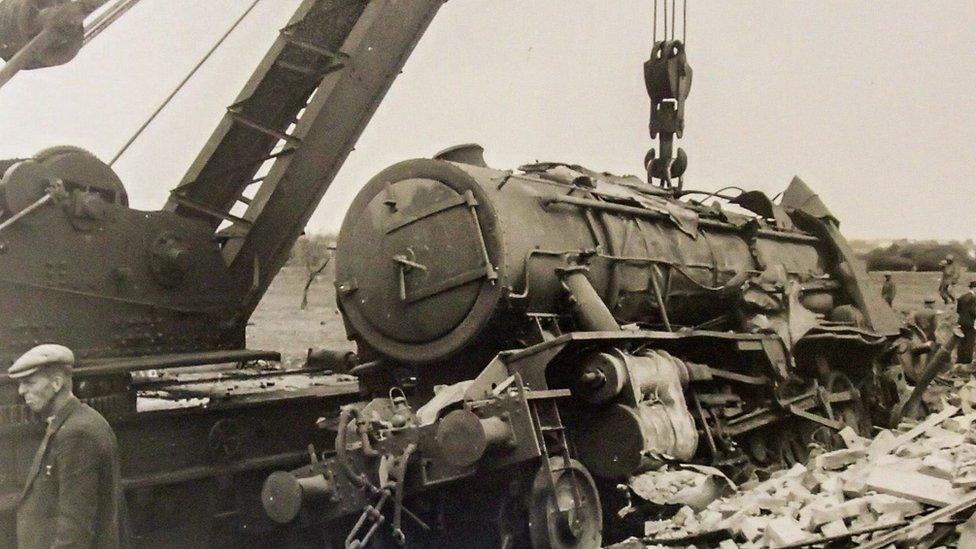
Driver Benjamin Gimbert, 42, and fireman James Nightall, 22, received the George Cross as they "risked their lives in order to minimise the effect of the fire"
Church bells have rung out to remember two men who died in a massive World War Two explosion while trying to save a town from destruction 75 years ago.
A train carrying bombs caught fire while travelling through Soham in Cambridgeshire, on 2 June 1944.
Driver Benjamin Gimbert and fireman James Nightall attempted to drive it out of town when it exploded, killing Nighthall and signalman Frank Bridges.
A memorial service was also held in the town's church to mark the event.
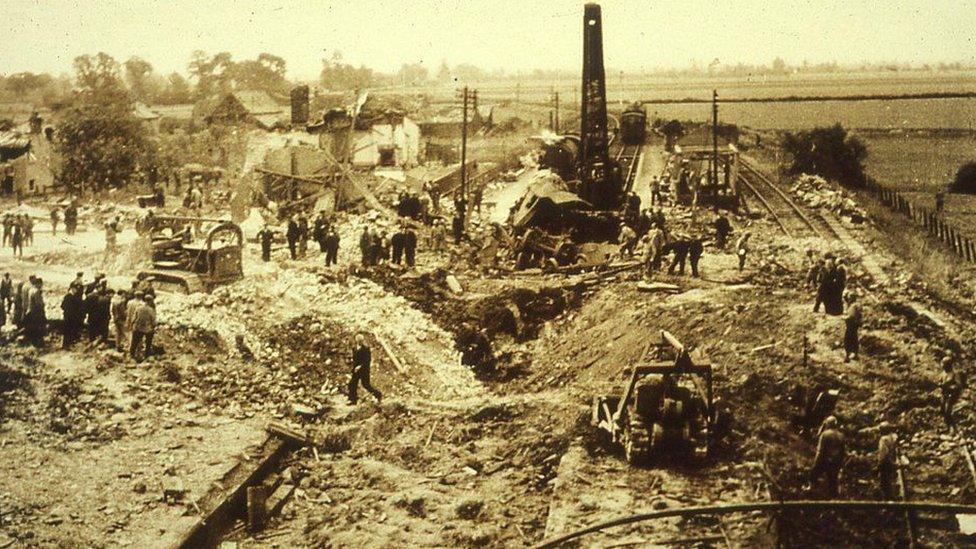
Amateur photographer W Martin Lane heard the explosion in nearby Ely and rushed over by taxi to take the first photographs of its aftermath
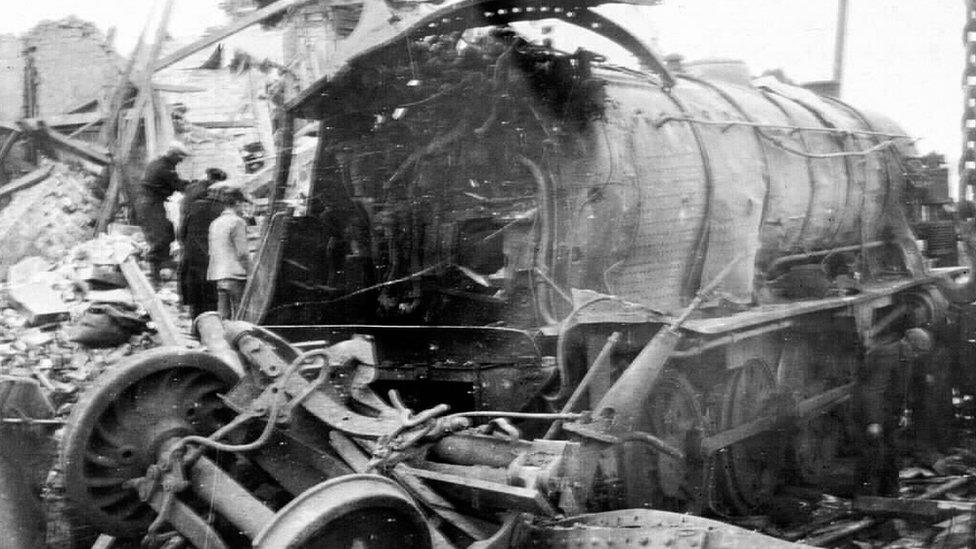
He then hitch-hiked to Fleet Street and gave his photos to the Daily Express in return for new film for his camera
Mr Gimbert was "fearfully maimed" but survived the incident which took place at about midnight, according to Cambridgeshire historian Mike Petty.
He explained they uncoupled the blazing munitions wagon from the rest in a bid to drive it out of town.
Mr Petty said if it had exploded closer to Soham - a town with a current population of about 10,000 - "there would be no Soham".
The explosion destroyed houses and left "scores of families homeless".
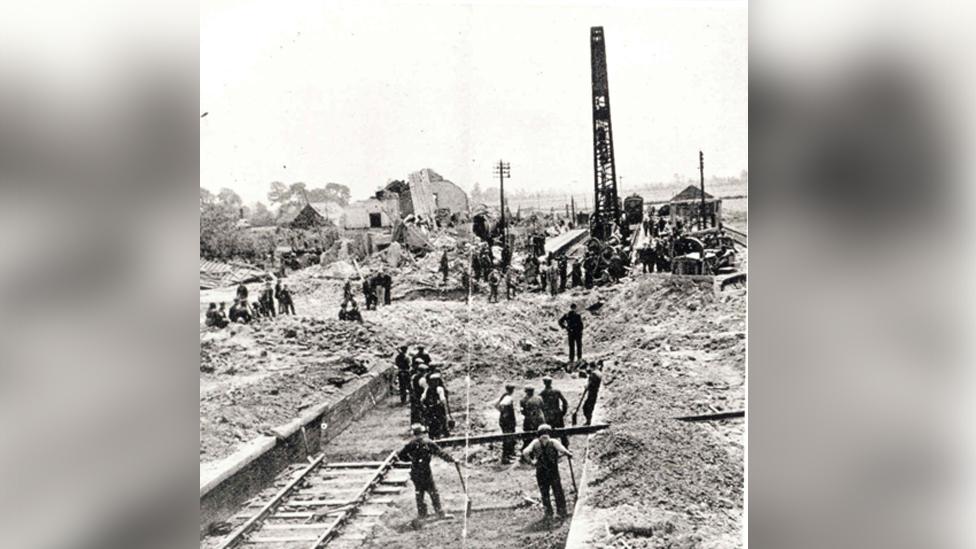
The disaster happened days before D-Day, so it was imperative the line was repaired as fast as possible, historian Mike Petty said
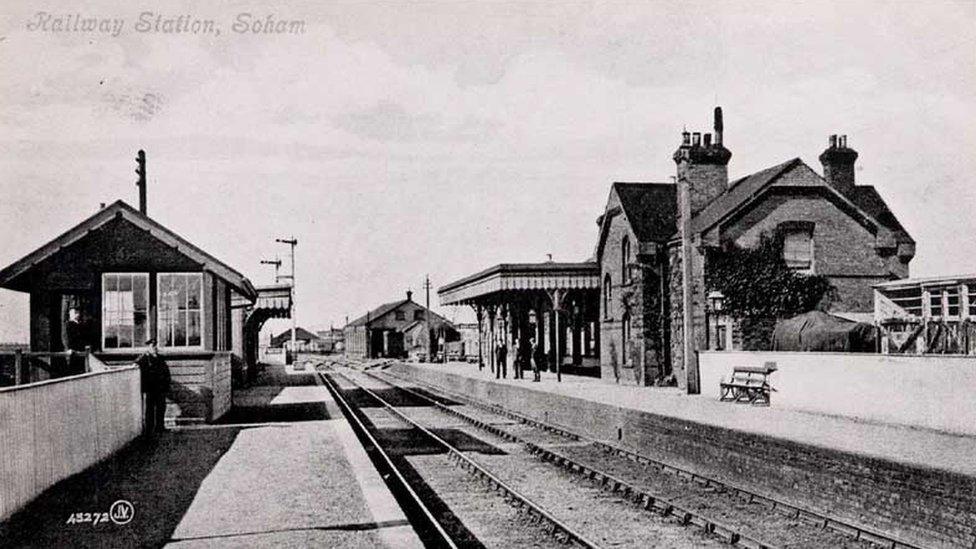
The railway station was well-used before the disaster
Kay Sinclair, whose father was an off-duty firefighter who went to help, said: "He was told to crawl into the crater in which the train was lying and retrieve the body of James Nightall.
"He also had to check the other munitions wagons as there was a fear they'd explode."
June Stittle, 87, was aged 12 at the time.
"There was this horrific bang and we were waiting for the next one as we thought it was bombs," she said.
"The ceiling had fallen down on us and the windows had all come in, while the bed was covered in rubble and glass."
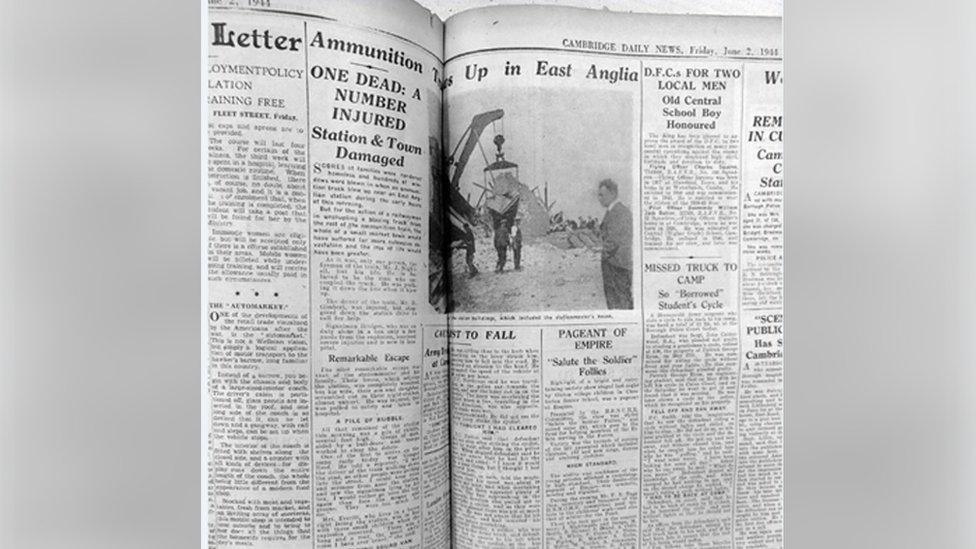
The explosion was widely reported but its location was not revealed due to wartime censorship
She said the flying squad arrived the next day - a group of men tasked with travelling the country to patch up bomb-damaged homes.
They stayed on for months, repairing houses.
Donna Martin, from Soham Museum, said a layer of debris was scattered over the town - which is still being uncovered when people work in their gardens.
Mr Gimbert and Mr Nightall both received the George Cross for their efforts.
- Published5 May 2019
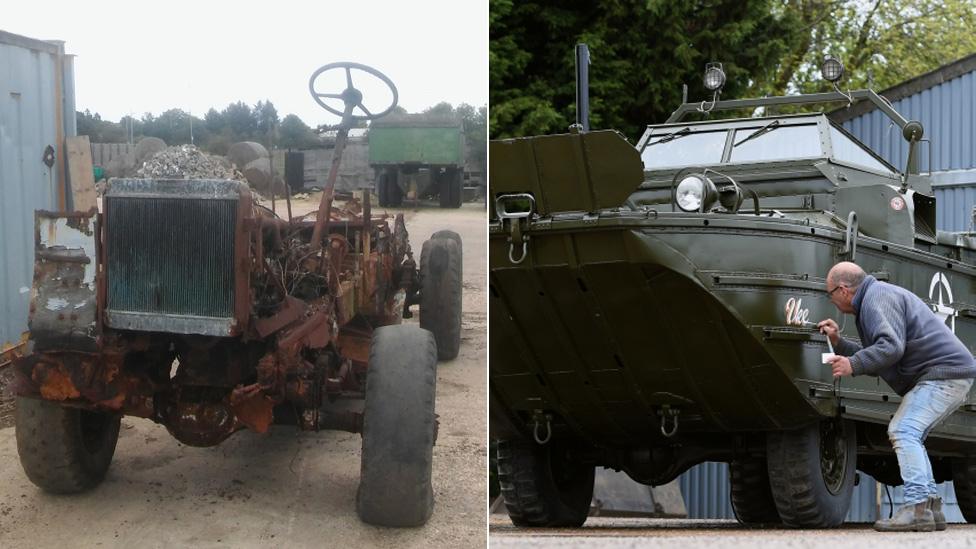
- Published26 March 2019
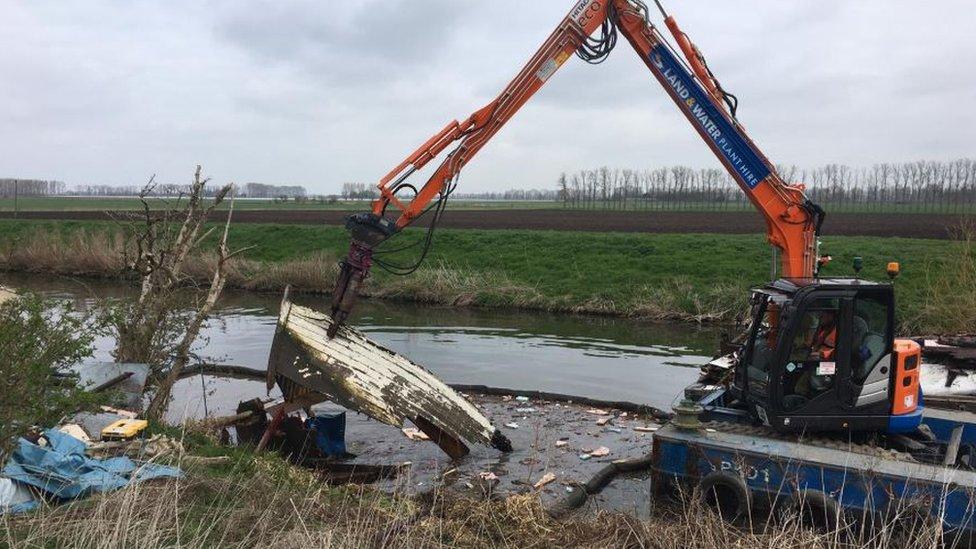
- Published22 March 2019
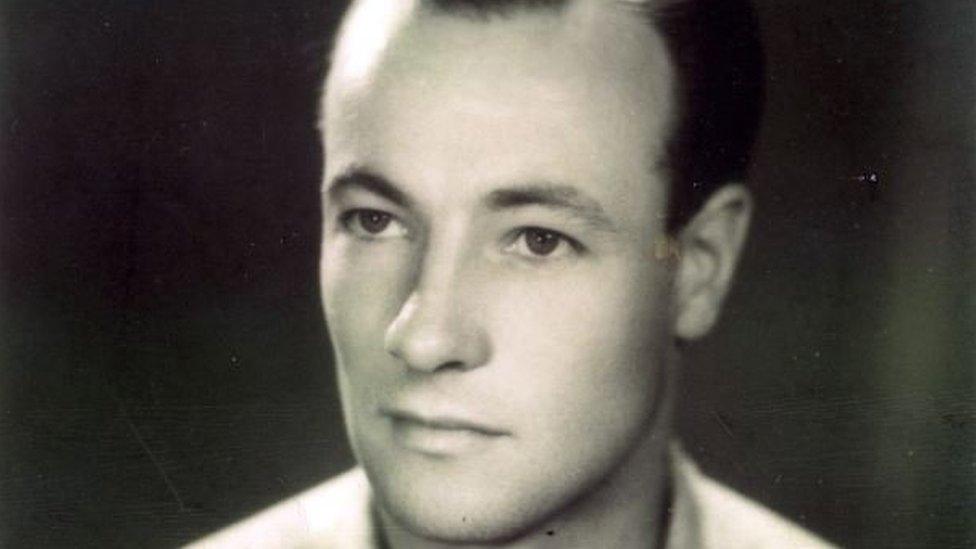
- Published22 February 2019
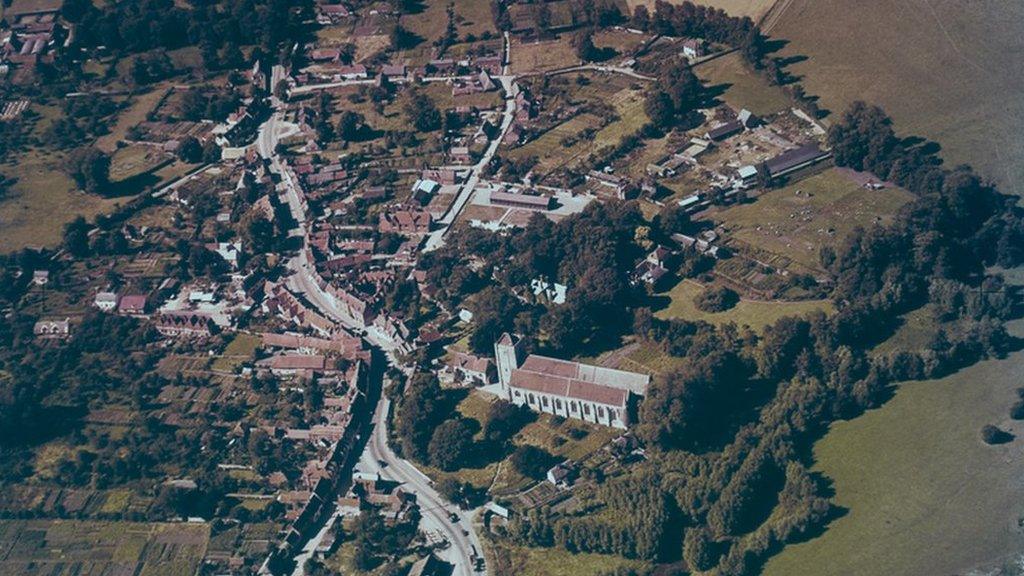
- Published15 April 2018
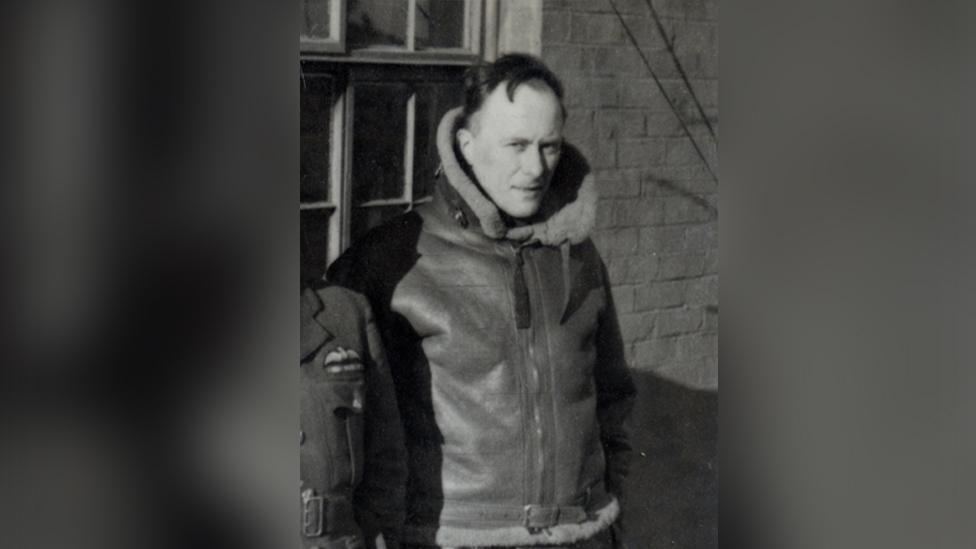
- Published17 June 2017
